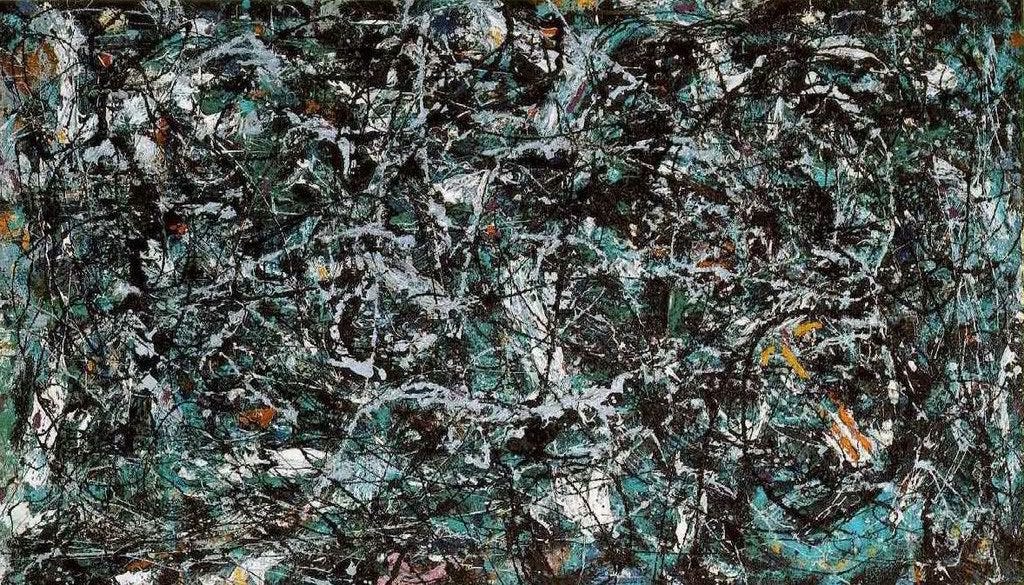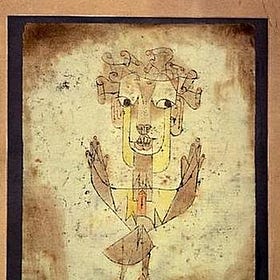This post continues from yesterday:
From Loss of World to Recovered Pearls
Over the next few posts, I want to think through our predicament and what might be done, especially with regard to the possibility of ancient wisdoms — historical, traditional, authoritative — being of any help. Predicament? Walter Benjamin, from Theses on the Philosophy of History
One of the conceits of this blog/newsletter is that “ancient wisdoms” may be able to speak into our present situation, which seems to be a disruption of everything that has gone before — those unprecedented “hockey-stick” graphs of geometric growth. I’ve expressed some skepticism that ancient wisdoms can in fact speak into an entirely new era, but one hypothesis would be that, for the sake of a new anthropology, for the sake of living anew in the Anthropocene, we would do well to keep and to rework at least the old anthropologies, wise or otherwise. Why not learn from the past? Why not hold onto what has been “tested by time”?
Conceits, skepticism, and hypotheses aside, I wanted to look at how Hannah Arendt and Walter Benjamin innovated an entirely new approach to history. They had to deal with the break in tradition (Traditionsbruch) they experienced firsthand in Nazi-occupied Europe, which the world recognized in the aftermath of two World Wars and the Holocaust. Something had irrevocably, and perhaps irreparably, changed with those events. For Arendt in particular, the appearance of totalitarianism was entirely unprecedented. As editor of her deceased friend Benjamin’s essays in Illuminations, including his momentous “Theses on the Philosophy of History,” Arendt adopts his approach to history to ground her own, calling it pearl diving.
The third section of Arendt’s introduction to Illuminations starts with a quotation from Shakespeare’s Tempest, “Full fathom five thy father lies…” where the sunken corpse has pearls for eyes and corals for bones, having undergone a transformative “sea change, rich and strange.” Eva de Valk offers an explanation:
The key words to understanding Benjamin’s influence on Arendt’s work is what she describes in her introduction with the metaphor of ‘pearl diving’, by means of which one ‘descends to the bottom of the sea, not to excavate the bottom and bring it to light but to pry loose the rich and the strange, the pearls and the coral in the depths, and carry them to the surface’ (Arendt, 1999, pp. 54-55). The depth of the sea is here a metaphor for the past, the pearls symbolize fragments from the past that (according to the pearl diver) have gained in value over the years – value that only can be brought to light by someone who takes the effort to find those forgotten fragments and discerns new meaning in them. This ‘pearl diving’ will be at the centre of my exploration of the intellectual relationship between Arendt and Benjamin. I will argue that pearl diving forms a tentative solution to a major problem, with which Arendt and Benjamin were both, in their own ways, struggling: the problem of the loss of tradition in the modern age. How to deal with the past…?
Source: Eva de Valk. “The Pearl Divers: Hannah Arendt, Walter Benjamin and the Demands of History.” Krisis (2010), p. 37. (PDF)
Rather than transmit the past, rather than receive from authoritative tradition, live by it, and pass it along, the break caused by 20th c atrocities requires an entirely different attitude to history.
For Benjamin, he is primarily looking backwards even to the point of wanting to offer some redemption to what has gone by and has been left in ruins, otherwise unredeemed. His “angel of history,” inspired by Klee’s painting, faces backwards, sees nothing but rubble and ruins accumulating at his feet, and “would like to stay, awaken the dead, and make whole what has been smashed.” But the angel can’t stay, blown into the future by the storm of progress. Benjamin’s historical practices, his use of citations and quotations from history, collected and put on display, amounts to a weak messianism(!), that could be redemptive temporarily in lieu of the eventual Last Judgment.
Arendt, on the other hand, while she practices pearl diving as much as Benjamin, inspired by him, is more forward-looking. She seeks out possibilities for the newness, freedom, and hope, that recovered pearls can also potentially offer. For her, history still works retrospectively, but less as a task of redemption than as responsible discernment or historical judgment on a human scale, telling stories of past human words and deeds for the sake of forward-looking hope.
Arendt’s pearl diving practice helps us understand her work in The Origins of Totalitarianism and also On Revolution, two historical studies that can otherwise be difficult to grasp. Origins presents a negative example, while On Revolution in the case of the American Revolution (but not the French) offers a positive one, exemplar, parable, even treasure (de Valt, p. 42). Arendt’s pearl-diving works similarly to Benjamin’s, facing similar difficulties with the break in tradition, but her politics are different.
Tomorrow we’ll have a look at why, not only is there a break in tradition and in authority, but also how such a break makes it necessary not to try to retrieve the “thread” — to conserve and restore tradition, as conservatives do — but rather to seek out distinctly new possibilities. The past is not to be cast off, but history in terms of causal force, tradition, authority, and so on, needs to remain broken.





